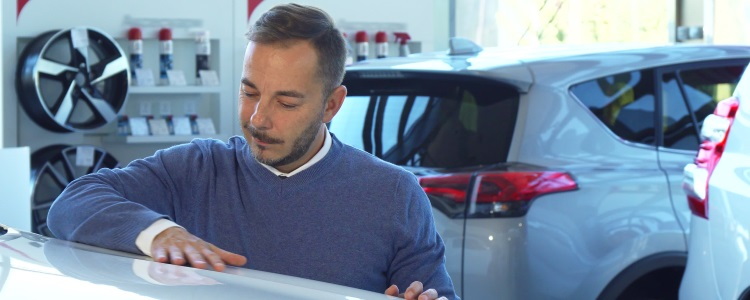Buying a car can be an exciting new adventure. Most people know the importance of test driving a car before making a final decision, but there’s more to it than just driving the car, especially if you decide to buy a used car.
Regardless of whether you’re buying a used or new vehicle, there are a few steps to take before you begin driving that can affect your decision. With the help of CarFax’s tips, here are some important steps to take when choosing and test driving a car.
Outside of the Car
 The first thing you should do is a walk around. Walk around the car and look for any dents, scratches or broken trim. Most dealers won’t remove every imperfection on a used vehicle, but they will fix small things, especially if you point it out to them. Next is to look under the car. Check to see if any fluids are leaking other than water. It’s normal to see condensation or water dripping, but anything else should be pointed out to the dealer to be fixed.
The first thing you should do is a walk around. Walk around the car and look for any dents, scratches or broken trim. Most dealers won’t remove every imperfection on a used vehicle, but they will fix small things, especially if you point it out to them. Next is to look under the car. Check to see if any fluids are leaking other than water. It’s normal to see condensation or water dripping, but anything else should be pointed out to the dealer to be fixed.
Then, do a quick check with the shock absorbers and brakes. To test the shock absorbers, just firmly press down on each corner of the front and rear bumpers. If you feel a bounce when doing this, it’s a sign that the shocks need to be replaced. To check the brakes, look through the wheel spokes. You should see thick brake pads. If not, they may need to be replaced soon.
Finally, open and close everything. Any and all doors should be opened and closed including the hood and trunk or liftgate. Test the doors to see if they lock, and examine the latches to make sure the doors are closing all the way. Also, check to see if the paint looks nice and the wheels are clean. It’s important that you like the way the vehicle looks on the outside, too.
Inside of the Car
Once you get inside, look around before sitting down. Lift the floor mats and check for rusty floors. Any form of rust can suggest there was flood damage, and it’s easier to back out of buying a car early on if you notice any rust. Next, check every single seat and test them out. Sit behind the wheel, in the passenger’s seat and back seats. Make sure they’re not only comfortable, but check any buttons and levers to ensure they work properly.
Now, turn the car on and test buttons and settings. Make sure every knob, button and switch works from the windows and mirrors to the lights. When checking the lights, you will need to get out of the car each time you change the settings. The more electronic features the car has, including the audio system, the more buttons you need to check.
Driving
Finally, it’s time to test the car itself. Get comfortable, adjust the seats and mirrors and listen to the engine when you turn it on. There should be no out of place sounds. Once you’re ready, shift to drive and slowly move it forward. Focus on how the car sounds and responds to simple things like braking and turning.
When it’s time to take it out on the road, bring it up to speed and request to drive on the highway, or a road with a speed limit of at least 60 mph. Drive for at least 10 miles on different types of roads with different speed limits to see how it handles varying conditions. It’s especially important to drive at highway speeds because cars can show problems you otherwise wouldn’t notice at higher speeds. You can better detect issues with the accelerator, brakes and steering drifting when driving faster.
Bottom Line
There’s a lot more to just driving a car when it comes to taking a test drive. Every detail needs to be looked at and evaluated. The last thing you would want is a new (or relatively new) car to need a costly repair.
Are you ready to purchase a car, but bad credit is in your way? Let Auto Credit Express help out. Our network of dealers has access to special finance lenders who can work with buyers struggling with credit. Fill out our fast and free auto loan request form to get started today.
















